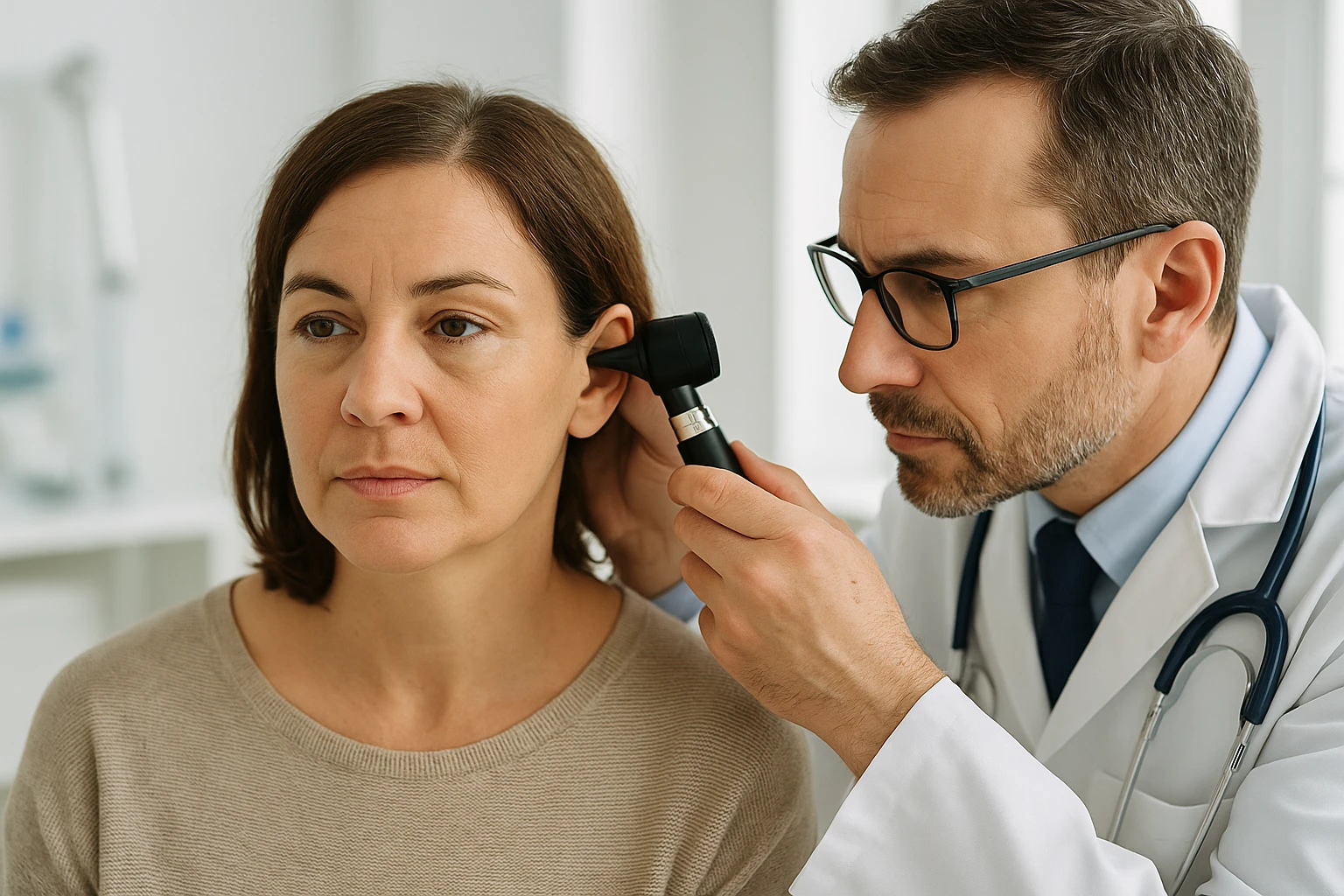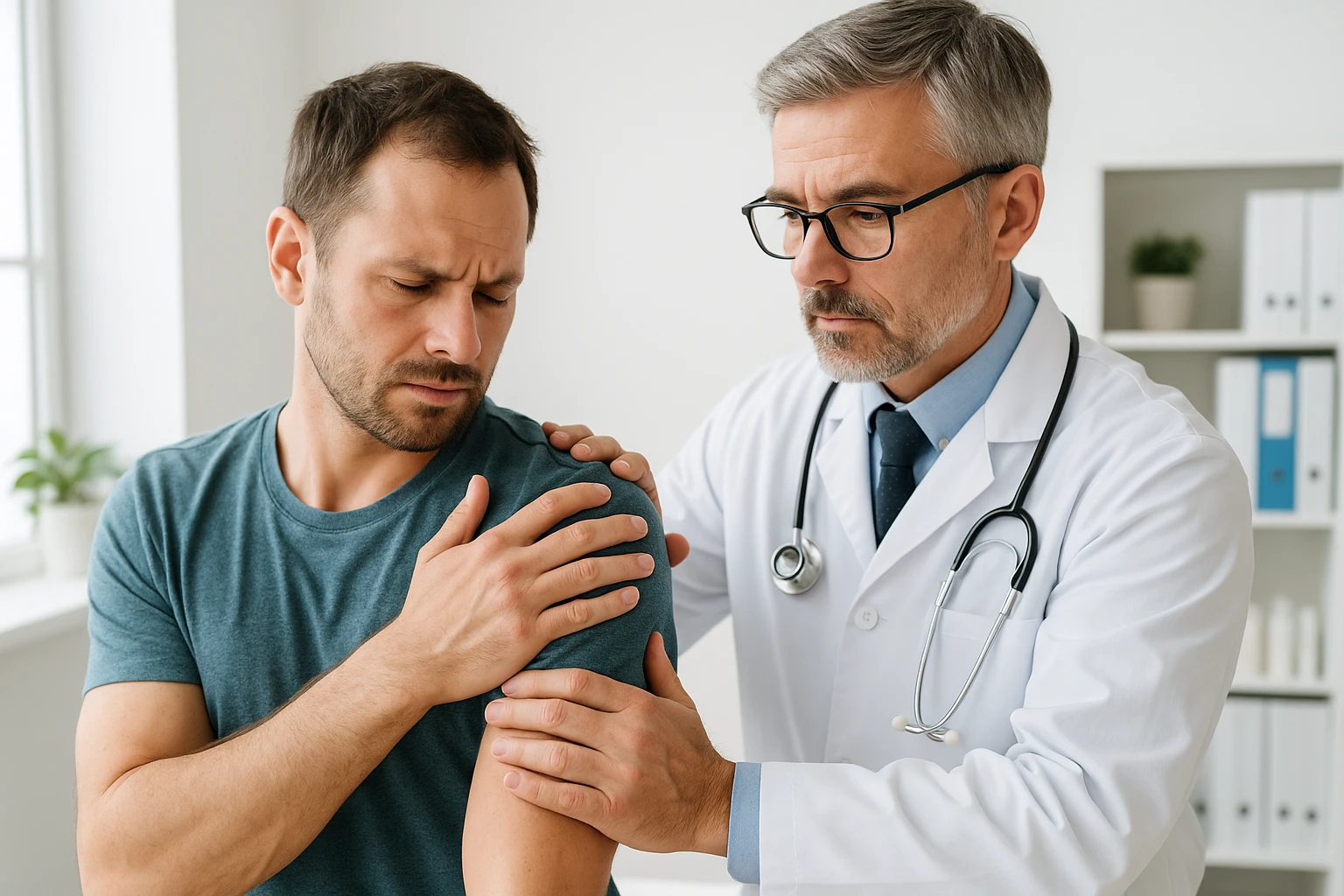Chest Pain: When to Worry, What It Means, and How to Stay Safe
Understanding Chest Pain
Chest pain is one of the most common reasons people seek emergency care, yet it can stem from many different causes. It refers to discomfort or pain between the neck and upper abdomen and may feel like pressure, tightness, or sharp stabbing pain. While heart problems such as angina or heart attack are among the most serious causes, chest pain can also arise from the lungs, digestive system, muscles, or even anxiety. Understanding when chest pain signals a medical emergency and when it may be less severe is essential for safety and peace of mind. This guide explains key causes, warning signs, diagnosis, and prevention, helping you know when to act and how to protect your heart health.
How Chest Pain Feels and What It Means
Chest pain can range from mild discomfort to severe pressure. It may be felt anywhere between the neck and upper abdomen. Because the chest houses the heart, lungs, and major blood vessels, pain in this region can be alarming. Understanding how chest pain feels and what it might indicate helps people respond appropriately when it occurs.
The sensation of chest pain can vary widely. Some describe it as a dull ache or heaviness, while others experience squeezing, fullness, or sharp, stabbing pain. These sensations may appear suddenly or develop gradually, lasting only a few seconds or persisting for minutes. The type and intensity of pain often depend on its cause, which may range from temporary muscle strain to serious heart or lung problems.
Common Patterns of Chest Pain
- Heart-related pain: May radiate to the arm, jaw, neck, or back and be accompanied by shortness of breath, sweating, nausea, or dizziness.
- Digestive pain: Often worsens after eating or lying down and may cause a burning or pressure-like feeling.
- Musculoskeletal pain: Becomes more noticeable with movement, stretching, or pressure on the chest wall.
Because chest pain can arise from many different sources, its meaning varies from person to person. Recognizing how the pain feels and what other symptoms accompany it is an important first step toward understanding whether the cause is likely mild or requires urgent medical attention.
Main Causes of Chest Pain
Chest pain can result from a wide range of medical conditions, some mild and others life-threatening. Because the chest contains vital organs and structures, pain in this area can come from the heart, lungs, digestive system, muscles, or even emotional stress. Understanding the main categories of causes helps identify when chest pain needs urgent attention.
Heart-Related Causes
- Angina: Pressure or heaviness that occurs when the heart muscle lacks oxygen-rich blood, often during activity or stress.
- Heart attack: Blocked blood flow to the heart muscle causes severe, persistent pain that may radiate to the arm, jaw, or back.
- Pericarditis: Inflammation of the sac around the heart leading to sharp pain that worsens with deep breathing or lying down.
Lung and Breathing Causes
- Pulmonary embolism: A blood clot in the lungs causing sudden, sharp pain and shortness of breath.
- Pneumothorax (collapsed lung): Sudden chest discomfort and breathing difficulty due to air leaking into the chest cavity.
- Pneumonia or pleurisy: Inflammation of lung tissue or its lining, leading to pain that worsens when breathing deeply or coughing.
Digestive System Causes
- Gastroesophageal reflux disease (GERD): Burning chest sensation caused by stomach acid moving into the esophagus.
- Peptic ulcer: Dull or aching discomfort that can feel similar to heart pain.
- Gallstones: Pain in the upper abdomen or chest, especially after fatty meals when the gallbladder contracts.
Musculoskeletal Causes
- Costochondritis: Inflammation of the cartilage connecting ribs to the breastbone, causing localized tenderness.
- Muscle strain: Pain from overexertion or injury that worsens with movement, deep breathing, or pressure.
Psychological and Stress-Related Causes
- Anxiety or panic attacks: Episodes that mimic heart attack symptoms, including tightness, shortness of breath, and rapid heartbeat.
Because so many different systems in the body can produce chest pain, distinguishing between mild and serious causes is not always easy. Any new, severe, or unexplained chest pain should be evaluated promptly by a healthcare professional.
When Chest Pain Is an Emergency
Not all chest pain signals a life-threatening emergency, but certain warning signs should never be ignored. Recognizing when to act quickly can make a lifesaving difference. Because heart-related pain can resemble other forms of discomfort, it is important to know which symptoms suggest a more serious problem.
Key Emergency Warning Signs
- Unrelenting pressure or heaviness: Chest pain that lasts several minutes or does not ease with rest may indicate a heart attack.
- Radiating pain: Discomfort spreading to the arm, jaw, neck, or back can be a sign of cardiac distress.
- Shortness of breath or fainting: Difficulty breathing, weakness, or lightheadedness along with chest pain should be treated as an emergency.
- Other concerning symptoms: Cold sweats, nausea, or intense anxiety occurring with chest discomfort warrant immediate medical attention.
What to Do
If chest pain is severe, persistent, or accompanied by any of these warning signs, call emergency services immediately. Do not attempt to drive yourself to the hospital. Early medical response allows testing, medication, or emergency treatment to begin as quickly as possible. When in doubt, seek prompt evaluation rather than waiting and risking complications.
How Chest Pain Is Diagnosed and Treated
Because chest pain can have many possible causes, doctors begin by gathering a detailed medical history and performing a physical examination. They ask when the pain began, what it feels like, whether it spreads to other areas, and what factors make it better or worse. Information about existing conditions, medications, and recent activities helps guide the evaluation.
How Doctors Diagnose Chest Pain
- Medical history: Identifies when symptoms started, their pattern, and related health factors.
- Physical examination: Involves listening to the heart and lungs, checking blood pressure and oxygen levels, and assessing for tenderness or swelling.
- Diagnostic tests: May include heart tracings, blood tests, or imaging to detect heart or lung problems.
Treatment Options by Cause
| Cause Category | Examples | Typical Treatment Approach |
|---|---|---|
| Heart-related | Angina, Heart attack, Pericarditis | Emergency care with oxygen, medications to improve blood flow, or procedures to restore circulation. |
| Lung-related | Pulmonary embolism, Pneumothorax, Pneumonia, Pleurisy | Medications to dissolve clots, re-expand the lung, or treat infection and inflammation. |
| Digestive-related | GERD, Peptic ulcer, Gallstones | Dietary changes, acid-reducing drugs, or surgical treatment if needed. |
| Musculoskeletal | Costochondritis, Muscle strain | Rest, gentle stretching, and anti-inflammatory medication. |
Because the same symptom can signal very different conditions, professional evaluation is the safest way to determine the right treatment. Accurate diagnosis ensures that serious causes are treated promptly while minor issues are effectively managed for long-term relief.
Preventing and Managing Chest Pain
Many cases of chest pain can be prevented or managed through healthy lifestyle choices. Taking daily steps to care for your body helps reduce strain on the heart and lowers the risk of future discomfort or emergencies. While some causes require medical treatment, prevention starts with consistent healthy habits.
Healthy Habits to Protect Your Heart
- Eat a balanced diet: Include fruits, vegetables, whole grains, and lean proteins to support cardiovascular health.
- Stay active: Engage in regular exercise such as walking, swimming, or cycling to strengthen the heart and improve circulation.
- Avoid tobacco: Quitting smoking or avoiding secondhand smoke reduces the risk of heart and lung problems.
- Manage key health factors: Keep blood pressure, cholesterol, and diabetes under control through monitoring and medical follow-up.
Managing Stress and Emotional Health
Anxiety and panic attacks can mimic cardiac chest pain, causing tightness or pressure in the chest. Practicing relaxation techniques, maintaining adequate rest, and seeking emotional support can help reduce stress-related discomfort.
Chest Pain in Children and Teens
Chest pain in younger people is rarely caused by heart problems. It is more often related to muscle strain, respiratory irritation, or anxiety. Parents should consult a healthcare provider if the pain is persistent, occurs with fainting, or appears during physical activity.
When to Seek Emergency Help
Any chest pain that feels like unrelenting pressure or heaviness lasting several minutes should be treated as a medical emergency. Call emergency services immediately rather than waiting for symptoms to pass. Paying attention to your body and maintaining healthy habits are key steps in protecting long-term heart health and overall well-being.
Frequently Asked Questions About Chest Pain
1. What does chest pain usually feel like?
Chest pain can feel like pressure, squeezing, fullness, or sharp stabbing discomfort. It may spread to the arm, jaw, neck, or back depending on the cause.
2. How can I tell if chest pain is heart-related or something else?
Heart-related chest pain often occurs with shortness of breath, sweating, or nausea and may worsen with activity. Pain from muscles or digestion usually changes with movement or position and is less intense.
3. When should I go to the emergency room for chest pain?
Seek immediate help if you have unrelenting pressure, pain lasting more than a few minutes, or symptoms like fainting, breathlessness, or pain radiating to the arm or jaw.
4. Can stress or anxiety cause chest pain?
Yes. Anxiety and panic attacks can cause chest tightness or rapid heartbeat that feels like a heart problem. Managing stress through relaxation or breathing exercises can reduce episodes.
5. What lifestyle changes help prevent chest pain?
Eating a balanced diet, exercising regularly, avoiding tobacco, and managing blood pressure, cholesterol, and diabetes all help prevent chest discomfort and improve heart health.
6. How is chest pain diagnosed by doctors?
Doctors start with a detailed history and physical exam, followed by tests such as ECG, blood work, or imaging to identify whether the pain is heart, lung, or digestive-related.
7. Is chest pain in children and teens serious?
Most chest pain in young people is not heart-related. It often comes from muscle strain, coughing, or anxiety, but persistent or activity-related pain should be checked by a doctor.












